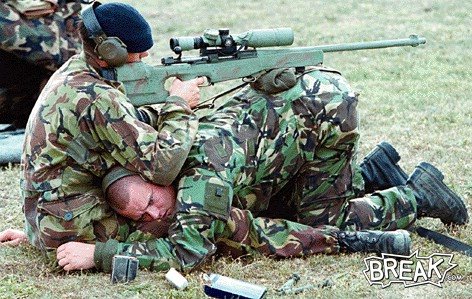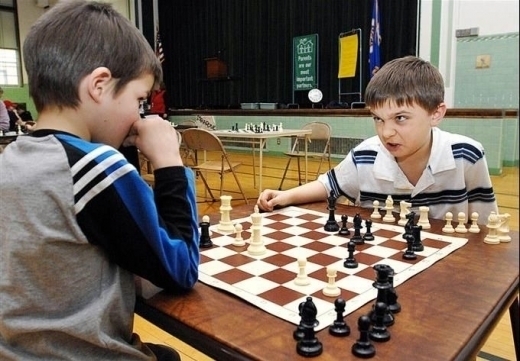TACTICS, TACTICS, TACTICS
In the previous post we have written about best ways to improve your chess.
One of the suggestions was very blatant, as it simply said that studying chess is esential for improvement.
The natural question for someone who is new to chess is, what to study and how to begin. This post will therefore, partly try to answer these questions.
One of the most often heard advice for beginners is to work on one’s tactical skill. It sure is a great advice, especially for kids, because the best way to do so is by solving tactical puzzles. And tactical puzzles are so much FUN.
Or at least they keep telling you that while you are a kid, while all you want is to pass that new level in the latest version of the ANGRY BIRDS.

However, it seems that this ANCIENT chess advice has some credibility. Because unlike some others dogmatic rules in chess (and life in general), this one very much seems to work.
Naturally, I don’t have a scientific proof for that. But I still think that once you dig beyond the surface, it turns out to be a very logical advice. I think that working on your tactics, especially as a beginner is REALLY a good idea because of the following:
- PRESENCE – tactics are important during all phases of the game. Whether it is a brilliant 11-move kingside attack in the middlegame, or modest “he takes this I take that” maneuvre in the endgame. On the path of becoming a complete player, good calculations and tactical awareness are the cornerstone.
- SPONTANEITY – often in chess, a tactical blow is not a logical follow up to a brilliant tactical idea. It happens that our opponent overlooks a tactical idea and gives us a nice present. Naturally, in order to be able to say “THANK YOU VERY MUCH”, a tactical idea has to be found and calculated correctly. The probability of this spontaneous opportunities appearing on the board is highly correlated to the rating of the players. Basically, lower rated players make more mistakes, and give you more opportunities to exploit.
- FUN WITHOUT DAMAGE TO YOUR IQ – seriously, why are these CLICK, CLICK, CLICK games that much popular?
If you still haven’t given up after this much Angry Birds bashing, in the remainder of the post I will try to concentrate on the basics of the tactical play. Because I think it is very important to get acquainted with a chess term closely related to the term tactics – and that is the CHESS COMBINATION.

CHESS COMBINATIONS – BASIC ELEMENTS
First of all, perhaps it is not a bad idea to define what chess combination actually is.
From the wikipedia: ” In chess, a combination is a sequence of moves, often initiated by a sacrifice, which leaves the opponent few options and results in tangible gain.”
Although I am not a big fan of the definitions, I think this one is pretty clear. Probably the only mystery is what a tangible gain is. The answer is that it can really be anything. As a result of combination, one side can win a modest pawn, or force the mate of the enemy king. It can be forced or not forced. It can be 10 moves or 2 moves long. It can appear wherever, whenever on the chessboard. And so on, and so on… As a famous chess author Irving Chernev once said:
“COMBINATION IS THE HEART OF CHESS.”
The key point here is the fact that no matter how long or how complicated a combination is, it can always be divided into shorter and simpler combinations. These smaller combinations are based on the typical tactical motives and are also called BASIC COMBINATION ELEMENTS.
As I have previously discussed in my “The art of checkmate” review, pattern recognition is one of the important aspects of chess learning. Learning basic combination elements is precisely that.
Once you get familiar with the various elements that appear during the game, you will soon start noticing them in your own games.
Therefore, without further ado, let’s take that “SMALL STEP FOR A CHESSPLAYER”, and see what some of the most often combination elements are.
DOUBLE ATTACK
Let us start with something familiar. When I played chess as a kid, my main goal to attack as many pieces possible with my knight. Without even knowing, I discovered the mechanism of the double attack.
It might come as a HUGE surprise, but a double attack is an instance when one pieces attacks two opposing pieces and as a result wins material.
The most vivid examples of the double attack are the ones that involve the knight and the pawn. Colloquially, they are often called FORKS. The example a pawn fork is given on the diagram below.
You can see that the pawn on e5 is supported, and as a result White wins a piece.
OVERLOADING
When a piece executes multiple defensive functions, it is said that the piece is OVERLOADED. One side can often take advantage of an overloaded piece by very simple tactical means. Please consider the position below:
As a result of the combination, White has won a piece. And that is quite decent TANGIBLE GAIN.
PIN
When a piece of a lower value finds itself IN FRONT of a piece of the lesser value and is being attacked by the opposing piece, then we have a PIN on the board.
Pin comes in two different variations, depending whether the piece IN THE BACK is the king or not.
When a piece is PINNED toward a king, we say that the pin is ABSOLUTE. The pinned piece can’t move. An example of an absolute pin is shown on diagram below.
The White rook is unable to move, and Black is able to capture it on the next move.
On the other hand, when a piece is PINNED toward some other, more valuable piece, we say that the pin is RELATIVE. The pinned piece can move, although it involves a loss of material.
The White rook is pinned toward White queen. If the rook moves, Black can capture the queen.
It is important to note that the pinned side can often extricate from a RELATIVE pin by tactical means. There are infinite possibilities, but the most famous one is certainly the famous LEGAL’S MATE.
SKEWER
Skewer can most easily be explained as a PIN IN REVERSE. The mechanicsm is similar, but a SKEWERED piece finds itself behind the king which is checked. The case of skewer is shown on the diagram below.
We can see that Black loses a whole rook due to SKEWER.
DISCOVERED ATTACK/CHECK
I contemplated about trying to explain the DISCOVERED ATTACK/CHECK with words, but started writing more than Leo Tolstoy wrote during his life. Therefore, please consider the diagrams instead.
DISCOVERED ATTACK is similar to discovered check. Consider the slightly changed diagram once again:
DOUBLE CHECK
When two pieces give the check to the king, then we have an instance of a DOUBLE CHECK. (If only everything was this simple).
The very big advantage of the double check is the fact that it can only be parried by moving the king. In some positions this is a very powerful tool while executing a combination.
The simplest instance of a double check is depicted on a diagram below:
In the DECOY section below is an example game that also serves as an example of the POWER OF A DOUBLE CHECK.
DECOY
DECOY is a combination element in which one side makes a sacrifices that forces the enemy piece to occupy that square.
While you might be wondering why would anyone do that, please consider the following position.
If you thought that such things don’t happen in real games, please consider the following game. It is one of the most famous games in the history of chess.
It is also a great example of how more complicated combinations are composed of basic combination elements. In this instance, first the DECOY Qd8!!, which is a queen sacrifice, forces the king on d8. And then the DOUBLE CHECK forces checkmate.
CLEARANCE
The penultimate element that we will examine is the CLEARANCE.
Sometimes, it simply happens that you wish one of your pieces simply wasn’t in play. (Somehow I hear that often from my parents. And I promised them I will leave the house before I am thirty, I really don’t understand.)
Uhm.. anyway… sometimes you simply want to CLEAR a square where one of your pieces is standing, in order to occupy it with another piece. And GAIN something TANGIBLE.
As usual, I would have probably been better if I simply inserted a diagram in the first place instead of lamenting about my life:
INTERFERENCE
Finally, last but not the least, an INTERFERENCE tactic /combination element. I think by now I can sense the reader INTERFERING with my lengthy diversions, so I will simply focus on the diagram immediately.
CONCLUSION
Congratulations, you have made it to the end of another lengthy post. Hopefully, now you have a slight idea about how tactics in chess work. To conclude, I would like to post an example of another very famous, and very beautiful game. It is one of the most famous KING HUNTS in the history of chess, and also a very thankful example for the theme of this post. You will notice how a certain BASIC COMBINATION ELEMENTS were followed by a series of checks that forced the mate in a spectacular fashion.


16.Kf1!! and there is no defence from 17.Nh2# Black is checkmate one move earlier!